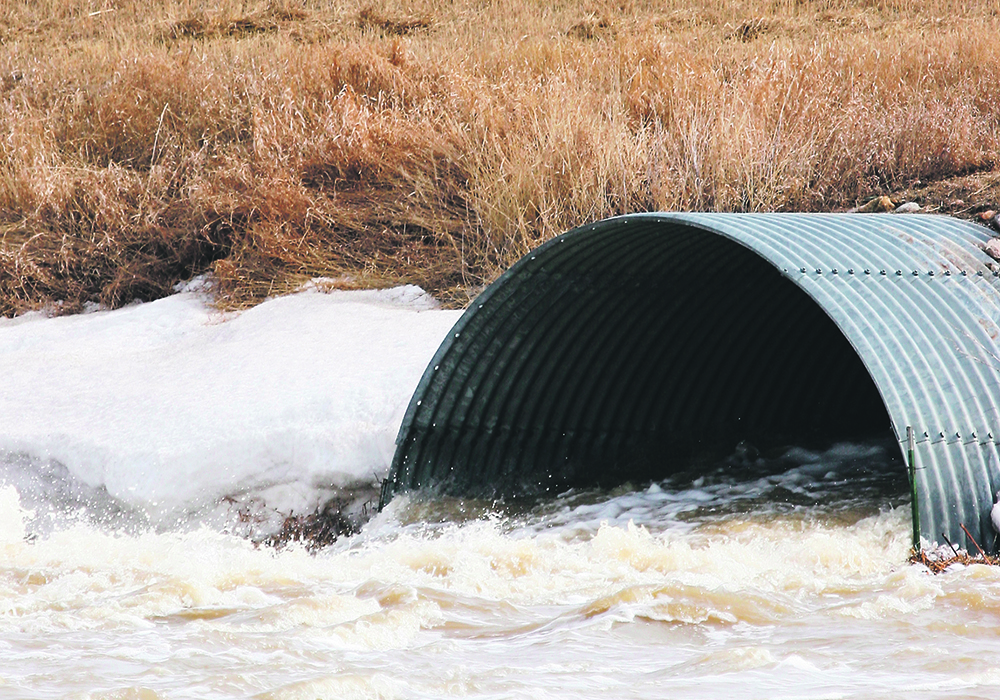Government plans to trim 25 percent from a program that provides funding for areas such as roads and bridges
Proposed provincial funding cuts of about 25 percent over the next three years could further hinder the ability of Alberta’s rural municipalities to provide services such as roads essential to agriculture, said a rural leader.
Rural municipalities are already struggling with millions of dollars in unpaid property taxes owed by the ailing oil and gas industry, said Paul McLauchlin, president of the Rural Municipalities of Alberta.
The ability of farmers to get to fields to move large volumes of goods in short periods of time requires serious infrastructure investments, he said.
Read Also

Using artificial intelligence in agriculture starts with the right data
Good data is critical as the agriculture sector increasingly adopts new AI technology to drive efficiency, sustainability and trust across all levels of the value chain.
“One thing that we’ve seen… is the tremendous size of machinery, the tremendous volumes that are being moved out of Alberta agriculture on our roads and our road design needs to keep up with this tremendous growth.”
Municipal Affairs Minister Ric McIver said the provincial government put “$500 million in the pocket of Alberta municipalities to invest in infrastructure during COVID” as part of the Municipal Stimulus Program.
Alberta recently “put a budget on the table with an $18-billion deficit,” he said during a news conference March 12.
“I think most Albertans and most of the municipalities would say that means that we need to get our expenses in line with our revenues. And everybody has to be part of that solution and municipalities are part of that, too.”
McIver introduced the proposed funding cuts March 11 in the Alberta legislature as part of Bill 56, the Local Measures Statutes Amendment Act. It must go through three readings before it can be enacted.
It aims to trim about 25 percent from the Municipal Sustainability Initiative (MSI), he said during a news conference March 11. The program, which is being extended to 2023-24, provides funding for everything from roads and bridges to recreation facilities.
The total amount available for all municipalities from 2021-23, including the cities of Calgary and Edmonton, will be about $2.17 billion, down from about $2.5 billion from 2019-21.
Although the total for MSI was increased in the provincial budget to $1.2 billion for 2021-22, available funding for 2022-23 and 2023-24 will each be $485 million.
The decrease is shocking, said McLauchlin, who is also reeve of Ponoka County.
However, McKenzie Kibler, press secretary for McIver, said in an email the MSI program provides a “front-loaded injection of funding that provides the flexibility for municipalities to plan according to their needs by allowing it to be spread out over a five-year period.”
Bill 56 will delay the implementation of the Local Government Fiscal Framework Act until 2024-25. The act ties infrastructure funding to changes in provincial revenue, which have been hit by everything from the pandemic to the downturn in the energy industry.
The act will set total baseline funding for municipalities and Metis settlements outside of Calgary and Edmonton at $340 million in 2024-25, down from $405 million, “plus an escalator based on provincial revenues,” said a provincial statement.
As part of the provincial budget, McIver separately announced March 12 that $3 billion will be spent over three years to extend the life of key provincial infrastructure. It includes $1.2 billion for provincial highway rehabilitation and $245 million for bridge construction.
But as jurisdictions responsible for about 70 percent of the roads and about 60 percent of the bridges in Alberta, rural municipalities are currently owed about $245 million in total unpaid property taxes by oil and gas companies, up from $81 million in 2019.
“In some municipalities, unpaid tax amounts are so high that service levels are being reduced, municipal staff are being laid off, and serious discussions are occurring about whether the municipalities can continue to function,” said McLauchlin in an earlier statement.
However, the provincial budget includes “$103.4 million for small and rural municipalities through the Strategic Transportation Infrastructure Program (STIP) over three years, which helps maintain and improve local bridges, roads, community airports, and resource roads,” said Kibler.
“We’ve heard how critical this funding is to supporting rural communities (to) get their goods to market.”
He said Alberta also extended the Provincial Education Requisition Credit (PERC) in 2020 to help municipalities deal with uncollectable taxes on oil and gas properties.
It provided $600 million to municipalities under the federal-provincial Municipal Operating Support Transfer (MOST) program “to offset increased costs and reduced revenues associated with the COVID-19 pandemic, including unpaid property taxes,” he said.
















